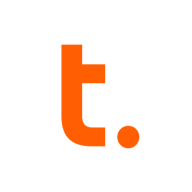

Teradata and WSO2 Enterprise Integrator are contenders in enterprise data management and integration software. Teradata leads with superior query execution and data warehouse management, while WSO2 is preferred for integration support.
Features: Teradata offers scalability, a "Parallel Everything" design, and a smart optimizer for efficient data warehousing and analytics. WSO2 provides robust integration with connectors, facilitating complex multi-platform integrations and streamlining enterprise operations.
Room for Improvement: Teradata users point to high costs, complexity, and integration challenges with big data platforms. Improved cloud services and easier data transformation are desired. WSO2 users seek enhancements in configuration, pricing models, and support for custom integrations.
Ease of Deployment and Customer Service: Teradata offers various deployment options, including on-premises and cloud solutions, with mixed reviews on technical support. WSO2, while easy to use for multi-platform integrations, primarily supports on-premises deployment and could improve admin functionality and technical support.
Pricing and ROI: Teradata's high pricing is seen as justified by performance and scalability benefits, delivering strong ROI. WSO2, although expensive for enterprise subscriptions, is viewed as cost-effective compared to alternatives, offering significant returns through operational improvements.


Teradata is a scalable data analytics platform designed to meet enterprise demands for large-scale data management and processing, focusing on performance, scalability, and security for complex query executions.
As a leading data warehousing solution, Teradata integrates advanced analytics enabling organizations to derive insights from massive datasets. It supports high-volume data workloads with its architecture optimized for analytical queries. Users benefit from its robust scalability, allowing seamless expansion as data grows. Teradata's SQL engine is compatible with a wide range of data types, ensuring flexibility in data analysis. With advanced security measures, it protects sensitive data across various environments, providing peace of mind to users handling critical information.
What are the most important features of Teradata?Teradata is widely used in industries like finance, telecommunications, and healthcare, where data-driven decisions are critical. Companies leverage its robust analytics capabilities to enhance customer experiences, streamline operations, and ensure compliance with regulatory requirements. In these sectors, quick access to data insights can significantly impact competitive advantage.
WSO2 Enterprise Integrator, core to the WSO2 Integration Agile Platform, is an open source Integration product for cloud native and container-native projects. It enables enterprise integration experts to build, scale, and secure sophisticated integration solutions to achieve digital agility. Unlike other integration products, WSO2 Enterprise Integrator already contains integration runtimes, message brokering, business process modeling, analytics and visual tooling capabilities.
We monitor all Data Integration reviews to prevent fraudulent reviews and keep review quality high. We do not post reviews by company employees or direct competitors. We validate each review for authenticity via cross-reference with LinkedIn, and personal follow-up with the reviewer when necessary.